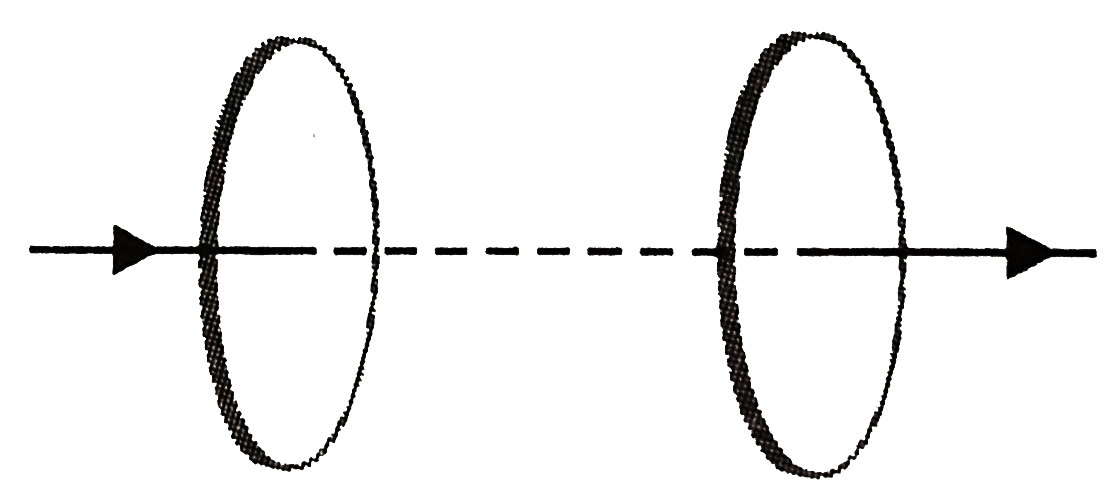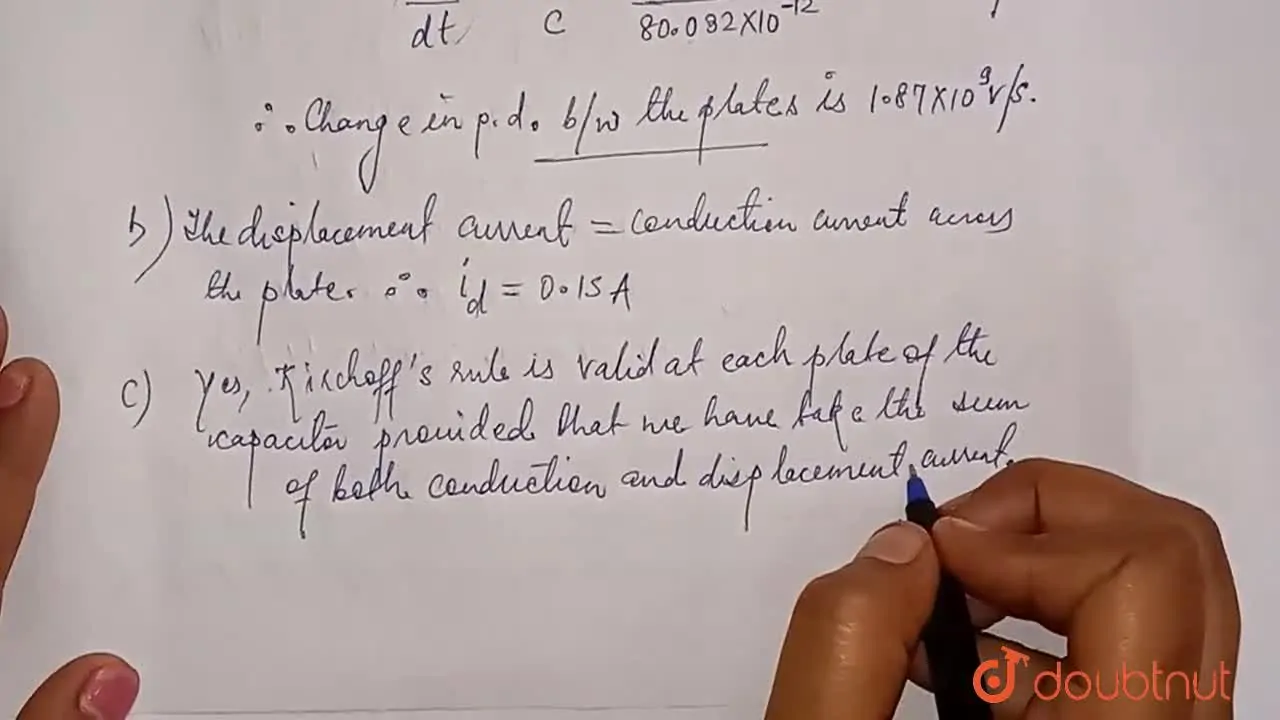Fig. shows a capacitor made of two circular plates each of radius 12 cm and separated by 5.0mm. The capacitor is being charged by an external source (not shown in the figure). The charging current is constant and equal to 0.15A.
(a) Calculate the capacitance and the rate of change of potential difference between the plates.
(b) Obtain the displacement current across the plates.
(c) Is Kirchhoff's first rule valid at each plate of the capacitor ? Explain.

Radius of each circular plate, r=12cm =0.12m
Distance between the plates, d=5cm=0.05m
Changing current, I=0.15A
permittivity of free space, ε0=3.85×10−12C2N−1m−2
(a) Capacitance between the two plates is given by the relation
=ε0Ad
C
where A=Area of each plate =πr2
C=ε0πr2d
=8.85×10π12×0.1220.05
=8.0032×10−12F=80.032pF
Charge on each plate, q=CV
Where,
V=potential difference across the plates
Differentiation on both sides with respect to time (t) gives :
dqdt=CdVdt
But, Dqdt=current(l)
∴dvdt=1C
⇒0.1580.032×10−12=1.87×109V/s
Therefore, the change in potential difference between the plates is 1.87×109V/s.
(b) The displacement current across the plates is the same as the conduction current.
Hence, the displacement current ,id is 0.15A.
(c) Yes
Kirchhoff's first rule is valid at each plate of the capacitor provided that we take the sum of conduction and displacement for current.
Related Playlists
Similar Questions
Figure shows a capacitor made of two circular plates each of radius 12cm, and separated by 5.0cm. the capacitor is being charged by an external source (not shown in the figure). The charging current is constant and equal to 0.15A
(a) Calcuate the capacitance and the rate of change of potential difference between the plates
(b) Obtain the displacement current across the plates
(c) Is kirchhoff's first rule(junction rule) vaild at each plate of the capacitor ? Explain.
 .View Solution
.View SolutionA capacitor made of two circular plates each of radius 12 cm and separated by 5 cm. The capacitor is being charged by an external source. The charging current is constant and equal to 0.15 A. The capacitance of the parallel plate capacitor is
 View Solution
View SolutionA capacitor, made of two parallel plates each of plate area A and separation d, is being charged by an external ac socurce. Show that the displacement current inside the same as the current charging the capacitor.
View SolutionA capacitor, made of two parallel plates each of plate area A and separation d, is being charged by an external ac socurce. Show that the displacement current inside the same as the current charging the capacitor.
View SolutionThe charging current for a capacitor is 0.25A. What is the displacement current across its plates?
View SolutionDisplacement current goes through the gap between the plates of a capacitor when the charge of the capacitor
View SolutionDisplacement current goes through the gap between the plates of a capacitor when the charge of the capacitor
View SolutionIn a parallel plate capacitor, the distance between the plates is d and potential difference across the plate is V. Energy stored per unit volume between the plates of capacitor is
View SolutionThe force between the plates of a parallel plate capacitor of capacitance C and distance of separation of the plates d with a potential difference V between the plates, is.
View SolutionA parallel plate air capacitor is charged to a potential difference of V volts. After disconnecting the charging battery the distance between the plates of the capacitor is increased using an isulating handle. As a result the potential difference between the plates
View Solution


